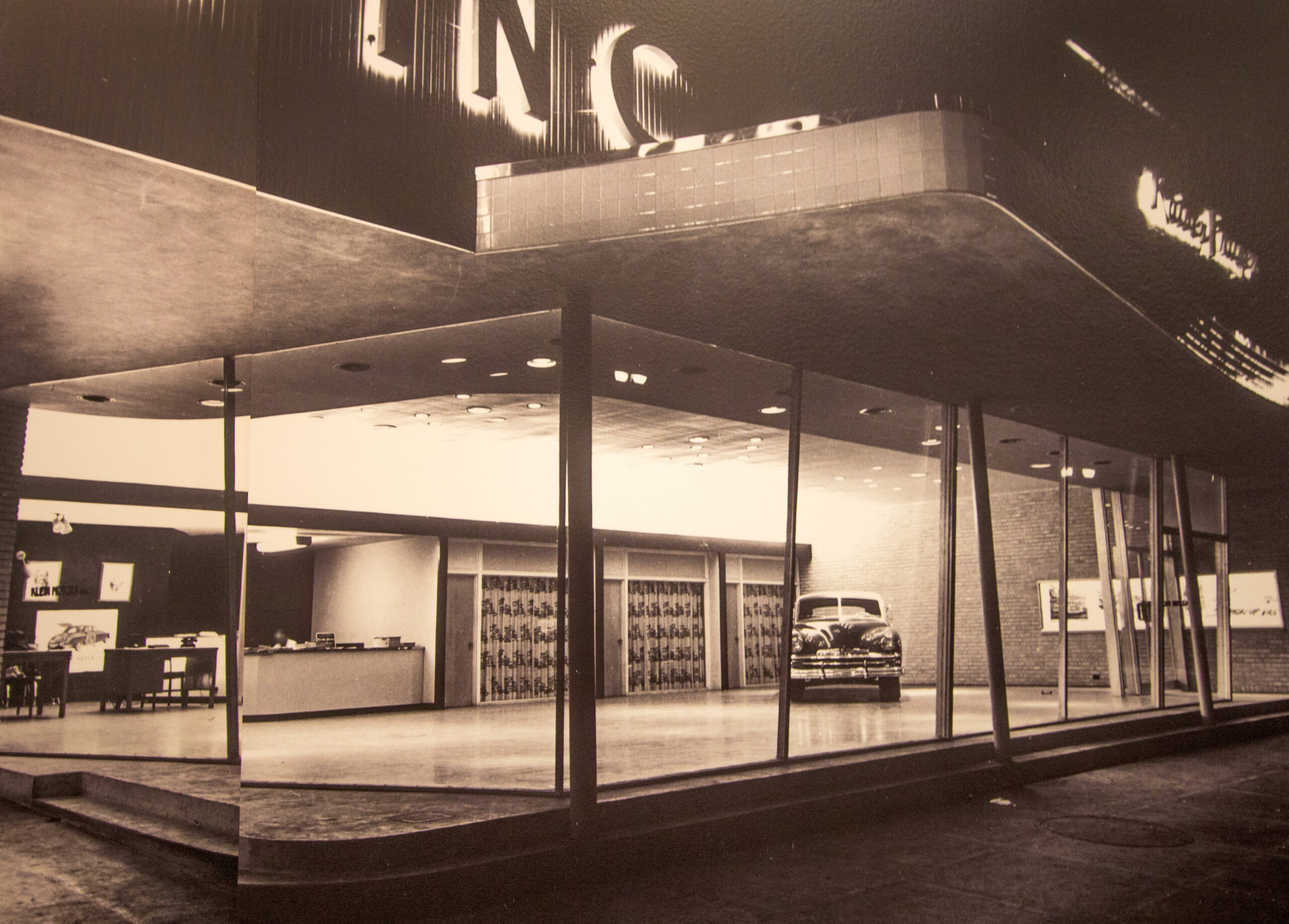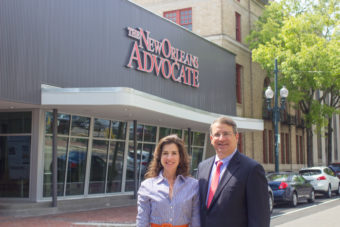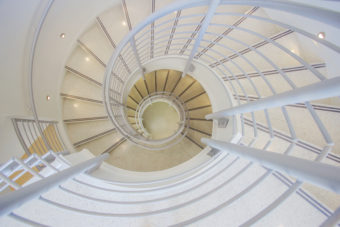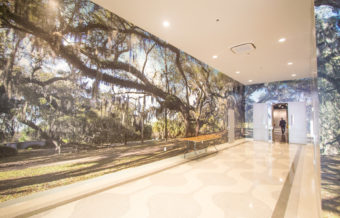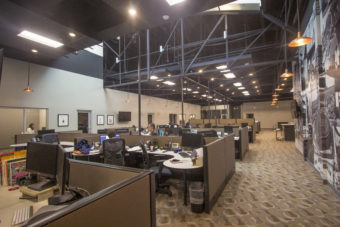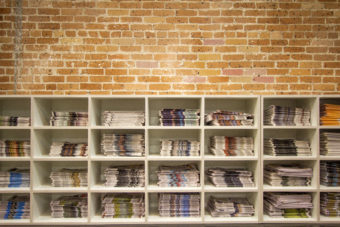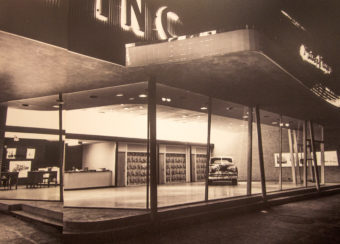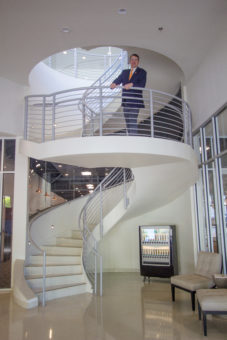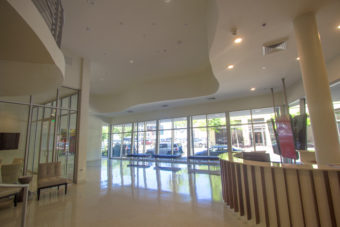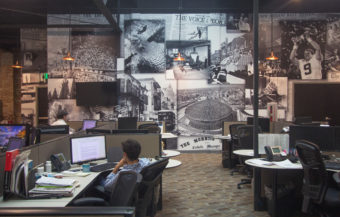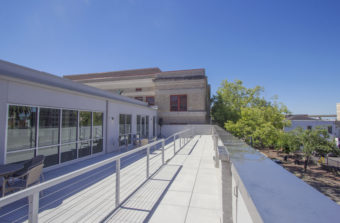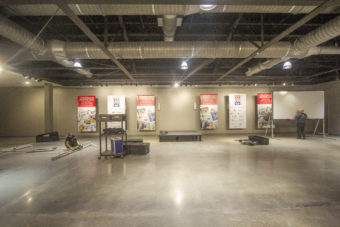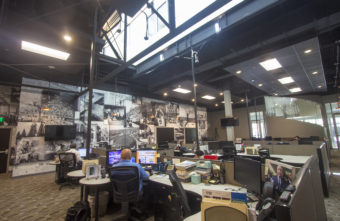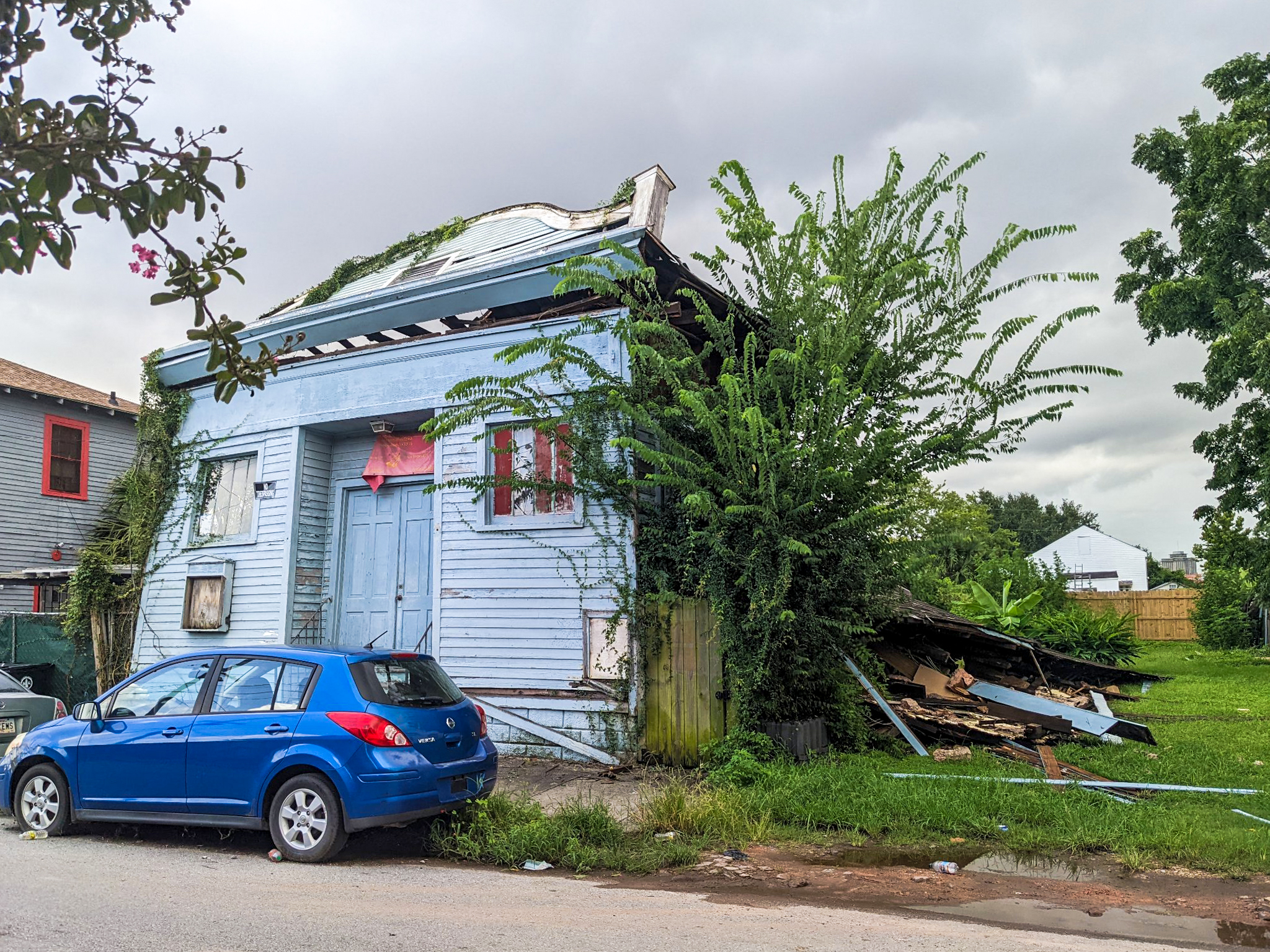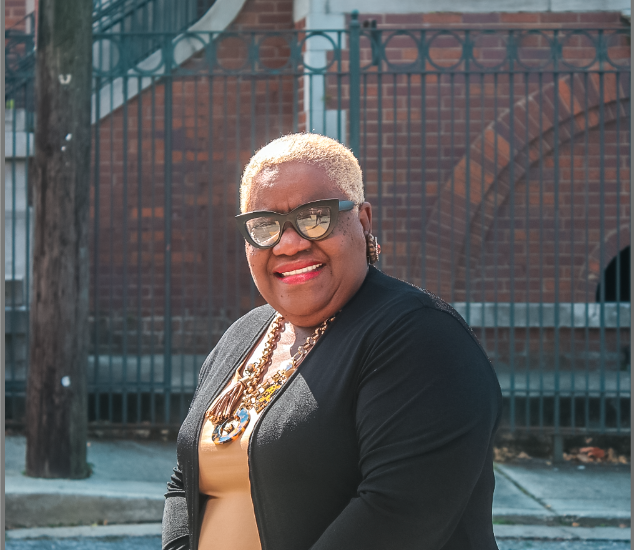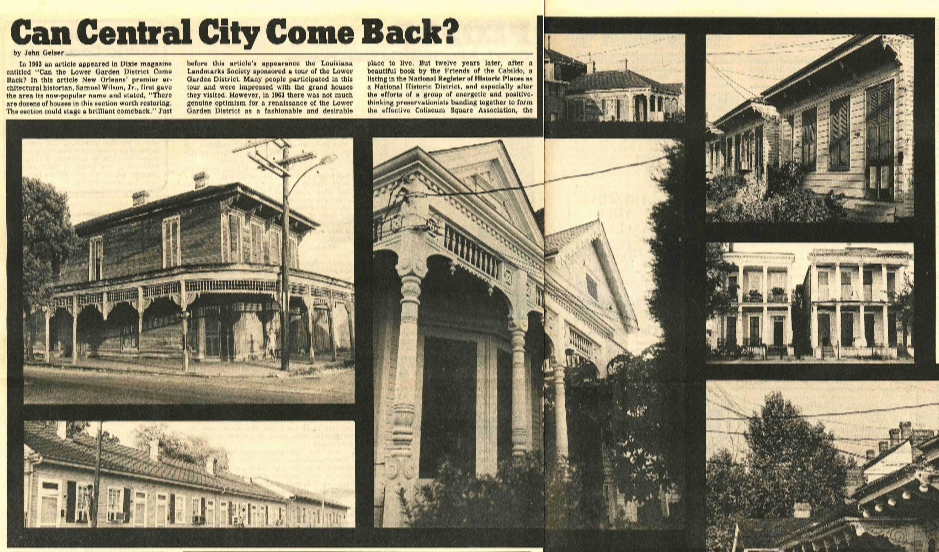It’s the perfect location for a local newspaper’s headquarters: Located on St. Charles Avenue in the bustling Lafayette Square neighborhood, The New Orleans Advocate building is on the streetcar and Mardi Gras parade routes, is steps from world-class restaurants, museums and art galleries, and is a quick trip to City Hall and neighborhoods across the city.
But Advocate owner John Georges originally purchased the building, known to many as the former site of Cajun dance hall Michaud’s, as the location for a museum dedicated to the history of Greeks in New Orleans. “Not long after I bought it, my wife said, ‘This is where the newspaper needs to go,’” he said.
Thus began the renovation of a former car showroom at 840 St. Charles Ave. into The New Orleans Advocate headquarters by Georges and his wife Dathel, working as a team.
“We tried to be true to the history of the building while giving it an exciting, open feeling,” Georges said. The building’s façade has been restored to the way it looked when initially designed by modernist architecture firm Curtis & Davis in 1949. It wasn’t new construction that Curtis & Davis undertook when originally designing the building, though close. Technically it was a renovation, as the original building that occupied the site had mostly burned, but owner Klein Motors, Inc. wanted the architects to keep a few of the walls that were still standing. The architects relied on trusses to support sweeping open expanses inside, and the front was adorned with a glass curtain wall to showcase the cars on display in the lobby.
Georges worked with architects Torrin Wallin and John Dalton to update the space while maintaining enough of its original fabric to qualify for state and federal historic rehabilitation tax credits. Though changes to the building were minimal, they have nonetheless transformed the structure into an airy, modern, bright space. A lightwell was cut into the middle of the structure to bring natural light to areas throughout the building, including the large, open newsroom. A deck with impressive views of the city’s downtown was added onto the second floor in a way that isn’t visible from the street, turning a once-empty area into “practical, usable space,” Georges said. (Also invisible are secret hatches in the front wall of the second-story deck that open to allow people to climb directly onto bleacher seating when it’s set up in front of the building for Mardi Gras parades.) And in the lobby, Georges dreamed up a stunning spiral staircase that has become a true focal point for the building’s interior.
As Georges worked with the architects to execute his vision, wife Dathel Georges worked with designer Jeanne Barousse to realize her own. The building’s elegant, understated interior finishes were selected by Mrs. Georges, as was the décor. Both translate into a modern yet comfortable ambience.
The building’s expansive interior walls are adorned with modern art — one standout piece in the lobby is a retro cigarette machine that holds mini dioramas, created by Kim Williams. The front entry features an impressive mural of City Park, and another mural, a history of newspapers in New Orleans, enlivens the already buzzing newsroom. The newsroom, which is set up with open work stations, also features a large, exposed brick wall and shelves that neatly display past issues.
Though it’s bustling with reporters and meetings, the newspaper’s staff only occupy 30 percent of the building. The rest is designated as public space for corporate and civic events sponsored by the Advocate or nonprofits or businesses. The building can hold 600 people, and a back parking lot can also be utilized for events.
Acquiring the back parking lot was the one issue that delayed the building’s completion. Though he purchased the building in 2013, Georges needed to also acquire the lot behind it — not just to accommodate staff vehicles, but to design his building’s fire exits. He was eventually successful, and after renovations were completed by contractor firm Palmisano, The New Orleans Advocate’s office opened in January 2017. About 50 reporters and ad salespeople work there daily.
“We’re now in the heart of city’s cultural activity, where food and art and history collide,” Georges said. “How appropriate to have 175-year-old newspaper here.”
Photos by Liz Jurey




